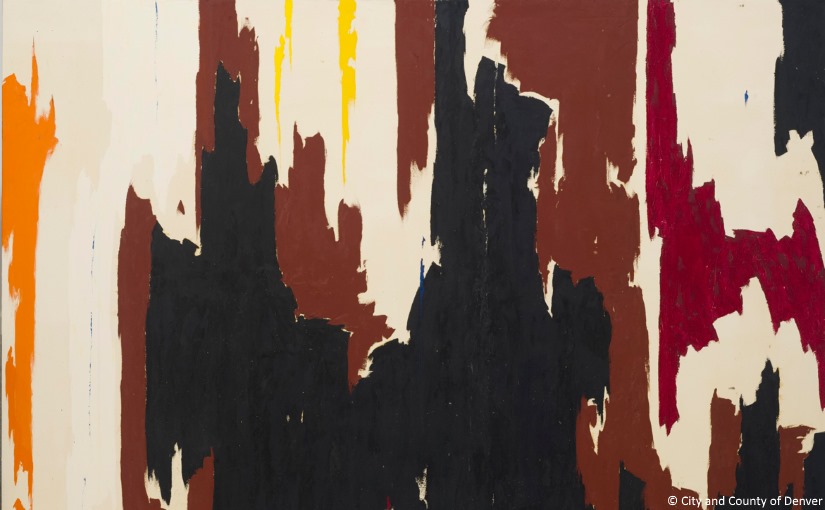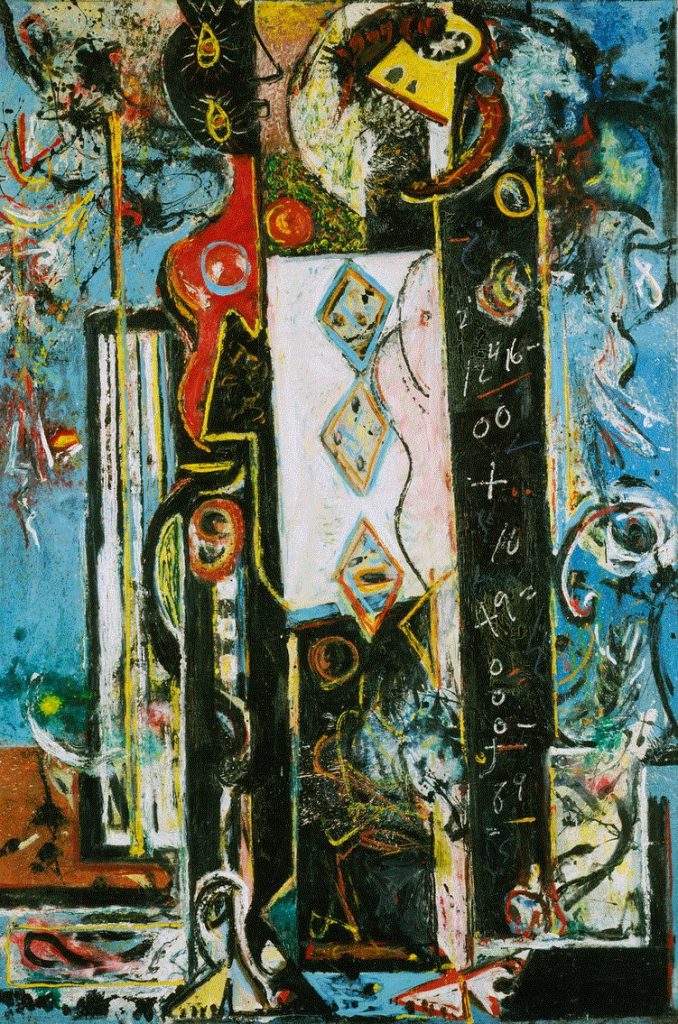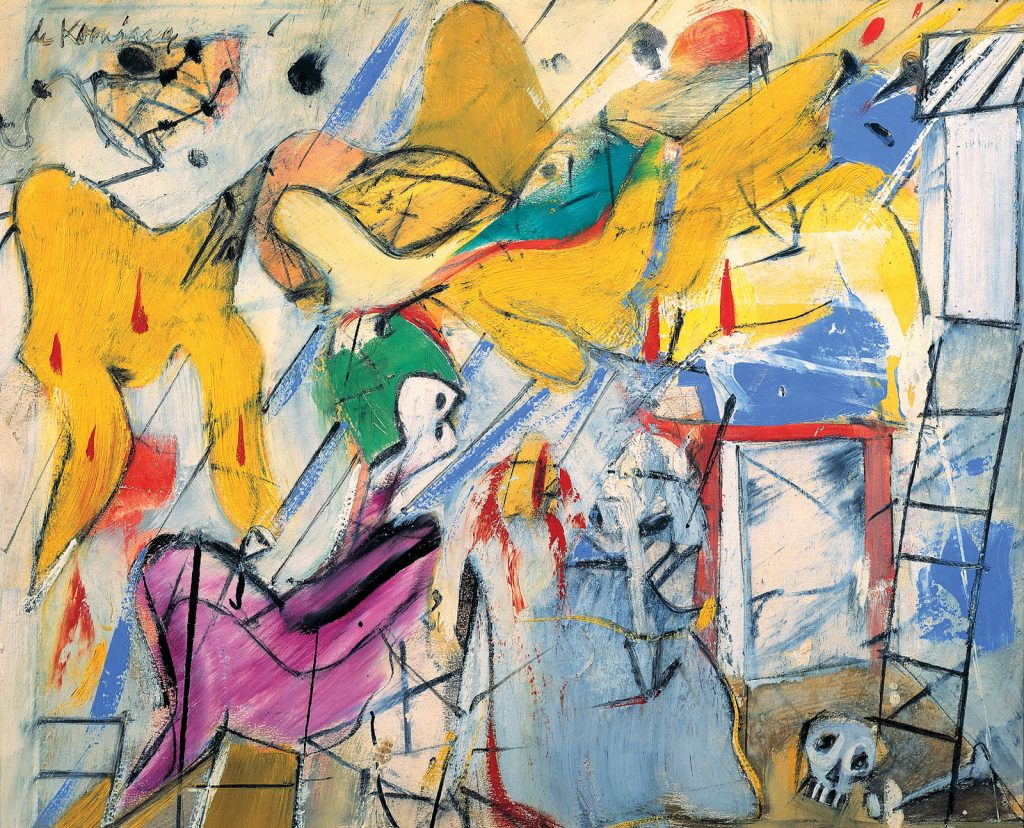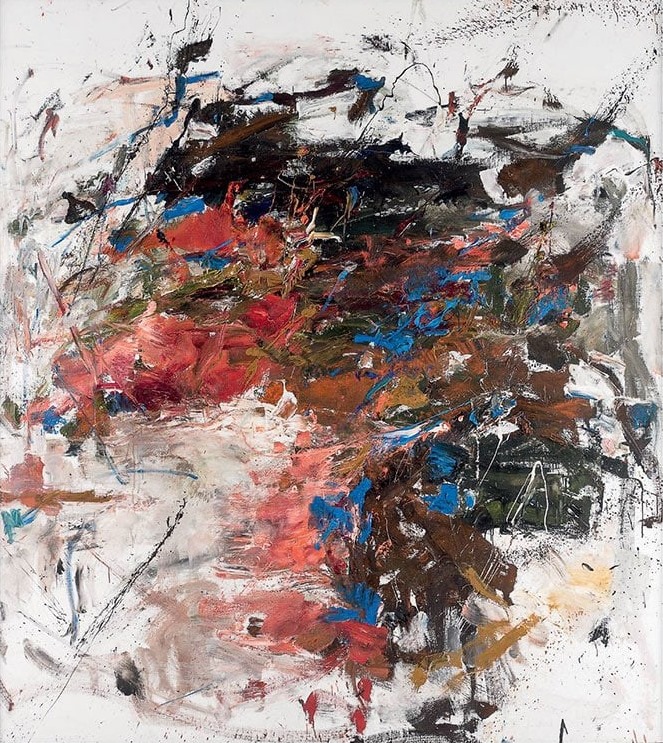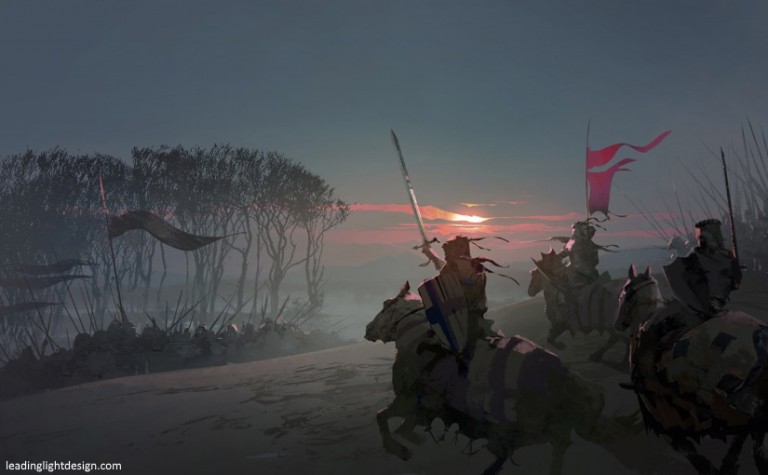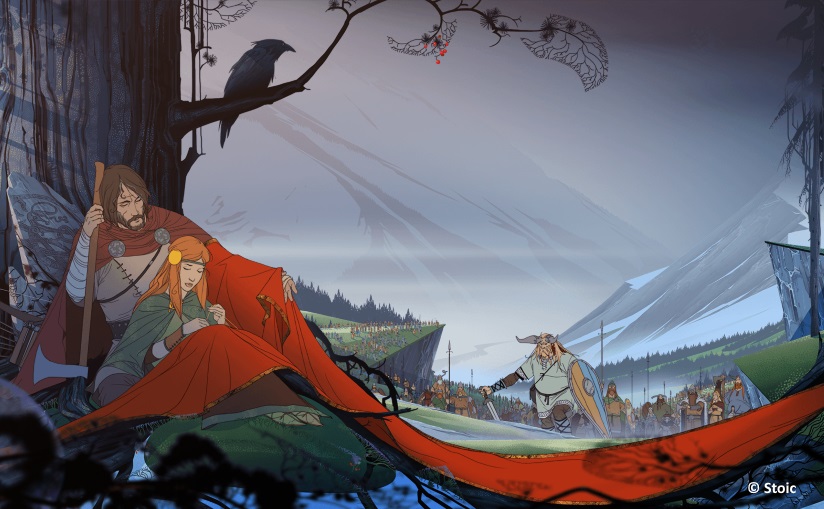Last week: Art, devils, witches and death
They’ve always seemed easy to parody, the Abstract Expressionists. ‘They just flicked paint about’, ‘can’t they draw?’ etc.
So I was as surprised as anyone to fall in love at the RA exhibition last weekend.
The galleries were crammed with works, to the displeasure of some critics, but it gave me an opportunity to see a comprehensive selection of art that was all about the action of painting itself. ‘AbEx’ more than anything else is about the way paint is applied. It kind of defeats the purpose of prints and reproductions for that reason. Indeed, Ad Reinhart’s ‘black’ paintings were, partly, an attempt to make it impossible to reproduce his work. He processed the paint he used so that it would reflect as little light as possible.
Of all the marvellous and thought provoking work it was the work of Clyfford Still which floored me (a detail from one of his paintings is the header image). His giant canvasses are landscapes, but he creates a sense of vastness, that is, he somehow captures how I feel when I see an awe-inspiring landscape, the impression it makes; he has shown me the way that my perception of a beautiful vista is translated into awe. There is also a silence, a depth in the purity of colours and the fractures that demanded my looking. I was hypnotised; he had shown me exactly how wonder feels to me!
My daughter was equally gobsmacked and it was a first for us, rabbiting excitedly about fine art when we left the Academy to hit the shops :)
I enjoyed de Kooning’s early work, as I did Pollock’s, while Joan Mitchell’s pieces were also invigorating. Here’s one of each below.
The vitality of these paintings, the search for the feeling to be represented in both form and formation regarding the ‘object’ was unexpectedly moving. I know I’m ignorant. I have visited only a handful of galleries in my life and I never engaged with paintings beyond a couple of Tate visits. The marks, their ferocity or apathy, their position, the choice of colours are all cryptic to me. I try to analyse, I try to unthink, I try to blend left and right brains and come away hardly the wiser but thrilled all the same. I urge anyone else in my position to see these paintings, or just go to a bloody gallery, for it forces out the world, you can focus on and contemplate beauty and truths. Whether that would be with delight or a sneer is yours to choose, but you can’t ‘knock it’ until you’ve (properly) tried it.
Aside from art there are a few books I’ve finished within the last week or so that I must recommend.
The Last Days of Jack Sparks by Jason Arnopp is a witty and well constructed horror story told from the doomed Jack Sparks’ point of view, along with interviews and commentary by other characters in the book, principally his brother. Jack Sparks’ point of view is presented as the text of a book debunking the supernatural, but when he openly laughs at a ‘demon’ possessing a young Italian girl, it all starts to go rather wrong for him. Jack Sparks is wonderfully arrogant and loathsome but it isn’t too long before we realise that both he and his brother aren’t being entirely honest with us. We follow Jack’s descent into something like madness and I was reminded, in the plotting, of some classic ghost story motifs when the reveals drop in the finale. While the wit derives from a nicely satirical take on social media that drives the plot along (Sparks being a self-obsessed internet celebrity blogger and music critic), it’s got some great creepy moments in it. What elevates it, however, is not just Arnopp’s capacity for blending dark and funny but also how he seamlessly injects some quite tragic elements in; I’m thinking of a particular conversation in the final third of the book that gave the whole thing a satisfying emotional heft I wasn’t expecting.
Uprooted by Naomi Novik brings a fairy tale world of evil enchanted forests, witches and wizards, princes, kings and queens bang up to date. The Chosen One in Uprooted is a scruffy and slightly wild girl, Agnieszka, who is chosen in a ritual where, every ten years, a haughty wizard known as the Dragon takes a village girl to his tower, from which they never return. We find out in her case it is because she has a gift for magic rather than because she is beautiful. While Novik gives Agnieszka a feminine magic of feeling and fluidity to contrast with the wizard’s bookish rulebound incantations, they learn, as they are forced to face the immensely powerful and insidious magic of the forest known as the Wood, that it is their combined power that can stand up to it. There are many clever elements, such as their union of magic creating what is for them both an embarrassing intimacy that turns into something stronger and there is a nod to ‘Sleeping Beauty’ cleverly twisted into the very trees of the wood. Even the girls who the Dragon takes don’t disappear, they just go off to join high society after years of education and training, a not so subtle nod to the feudal notions of class that cause Agnieszka much embarrassment as she becomes embroiled in her kingdom’s desparate war with the Wood. There is a marvellously escalating sense of danger and desparation all told in the slightly breathless style of a performing storyteller. This is no criticism of the prose, for it is suited perfectly to the story. There is a satisfyingly dark edge to proceedings that all good fairy tales require, and apart from one rather explicit scene, the book could be enjoyed by almost anyone, another important facet to a proper fairy tale.
I’ll confess that I was moments from being thrilled with the end of the novel when the conventions that had been stretched and twisted throughout came back with a snap. The end of the ending, if you will, was a fairytale convention too far for this otherwise delightful read.
Finally, on Friday night last, I decided I’d turn off the PC, grab a rather good bottle of rum out of the cupboard and read through The Sculptor by Scott McCloud.
Beautifully illustrated throughout by McCloud, this graphic novel tells the story of a down on his luck young sculptor, David. Broke and ineptly hot-headed enough to have pissed off a patron and various critics and gallery owners, David has been assigned to artistic oblivion in his beloved New York. But Death appears and offers David the chance to manipulate any material at will with his bare hands and thus create the sculptures of his dreams. In exchange he must trade all of his natural life for two hundred more days. Which was a no-brainer until he fell deeply in love.
It’s highly sentimental – unashamedly sentimental – but as I’ve written previously I’m very cool with that, I love it. McCloud follows David in his final two hundred days, using the McGuffin to compress his emotional arc and have him come to terms with mortality. The simplicity of his choices and the desperation of his young love are all easy fuel for the ‘live life to the full’ moral, but I was sucked in because the plot was such an effective microcosm for the missed steps and miscommunications that plague us all, the choices that come back to bite us yet teach us lessons we’d never want to lose the learning of. David’s growing mania as the days dwindle, the sense of a clock ticking more and more loudly, is perhaps something you’ve got to be a lot older than David to hear and fear in the real world. Nevertheless, the lesson that ‘it’s not how long you’ve got but what you do with the time you have’ is nicely explored with many beautifully considered panels throughout.
